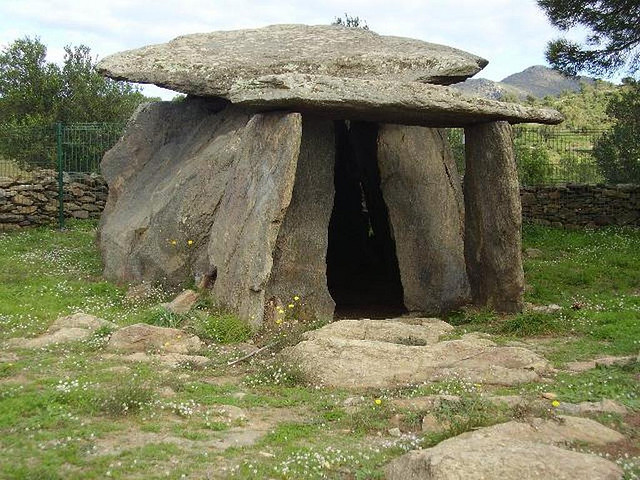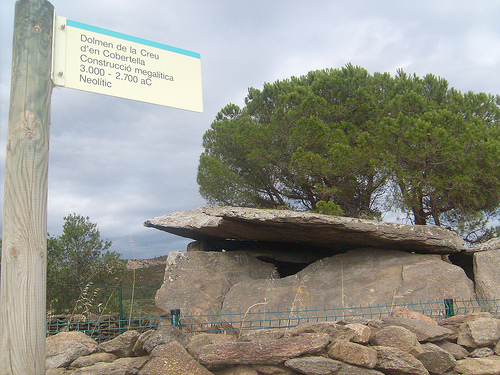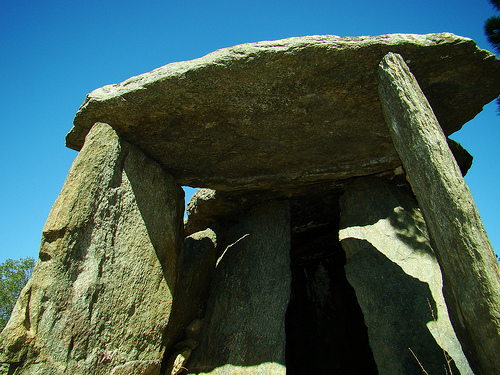All Ampurdán is rich in megalithic monuments, it is in fact the most zone in the Iberian peninsula. This dolmen, located just 1.5 km from Roses village, is the largest in Catalonia and is about 5000 years old.

Dolmen Creu d'en Cobertella, Roses, Girona, Costa Brava, Spain
Dolmen Creu d’en Cobertella is a tomb built of granite slabs between 3000 and 2700 BC, in the Neolithic. It is therefore a funerary enclosure in which, through a corridor that now no longer exists (but whose marks in the rocky base of the monument show their past existence) human bodies were buried inside.
The first written evidence of the presence of this monument comes from thirteenth century, when it was known as ‘petra coperta’ (covered rock). As villagers then were not aware of the importance of this archaeological evidence it was used as goat pen attached to the farmhouse attached to it, now in ruins.

Dolmen de la Creu d'en Cobertella is located in a megalithic guided foot trail, in Roses, Cape of Creus, Costa Brava
Although studies of this monument began early twentieth century, it was not until twentieth mid-century when the first excavations were made: in addition to the aforementioned brands of the corridor today disappeared, remains of bones, pottery, coins of the Roman empire and other funeral items were found.
Dolmen dimensions are impressive, especially considering the lack of means with which the inhabitants of this land had to lift weights like these. In total it is formed by seven slabs granite gneiss. The stone used as roof measures 4.15 meters by 5.7. Its thickness is 40 cm. The top of the enclosure reaches 2.45 meters and the plant is 3.90 by 3.15 meters. Inside the dolmen, not opened to the public, we would see that the interior walls contain small spaces were funeral rituals containers were were placed.

Entrance to the dolmen Creu d'en Cobertella, in Roses, Cape of Creus
Getting to the dolmen Creu d’en Cobertella is relatively easy. Starting from the center of Roses village take the Cala Montjoi route, that takes us to the beautiful landscapes of Cap de Creus. In one of the curves, just 1.5kms, on the left, you’ll see an indication of the walking path leading to the dolmen, that you’ll reach after 500 mts (park beside the route). This same walking path leads us also to other dolmens in the surrounding as Casa Cremada and Llit de la Generala or Turo de l’Home.







